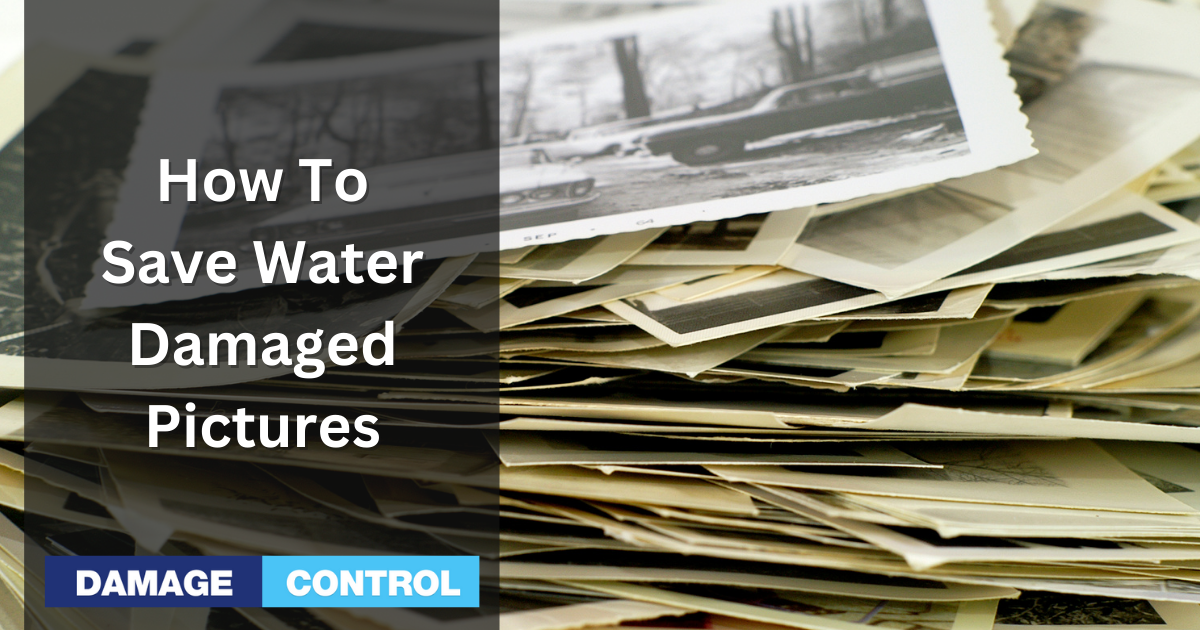The loss of family photographs can be upsetting for any homeowner, especially if those photographs are antiques or depict particularly important events. In the event of flooding, hurricanes, and other types of events that could cause water damage, these photographs are in particular danger of being irreparably harmed.
Fortunately, a few methods exist to preserve and even repair them, depending upon their condition. If you have photographs that you would like to preserve, there are a few do's and don'ts that you should follow to ensure the maximum possibility of success. Keep in mind that some photos, such as antiques and those with a high amount of sentimental value, are best left for professionals to restore.
Get To Your Photos Quickly
If you're serious about preserving your photos, getting to them within a couple of days of them being submerged in water is extremely important. Much longer than 2 to 3 days and you're in an area where the damage may not be able to be undone.
Antique Photos Are In The Most Danger
If you have a collection of valuable antique photos, you need to consult a conservation specialist before attempting to salvage or restore these yourself. It can be difficult to salvage antique photographs for a professional, so doing this yourself isn't a safe option.
If You Don't Have Antiques, Start With Images With No Copies
If you have water damaged photos that have neither film negatives or digital copies, you should start the recovery process with these first. You can always reprint the images that you have digital copies of later if you have those digital copies backed up to a cloud service, stored externally, and the storage device they were on isn't also water damaged.
Be Careful Removing Them From Dirty Water
If your pictures are in muddy or otherwise dirty water, be careful removing them. Don't touch the surface of the photos if you can help it. If the images are in stacks or in frames, separate them immediately.
If your pictures are in frames, be particularly careful; remove the picture and the glass from the frame at the same time, being sure to keep the picture stuck to the glass. To safely remove it from sticking to the glass, run a very slow stream of tap water inbetween the glass and the picture to break the seal.
Don't Dry The Pictures Out
If your photographs are still wet, don't let them dry out. The primary reason for this is that if they do and they're in a stack or a pile, they will stick to each other and be much harder to salvage. If you try to simply pull them apart after they're dry, you may cause damage that is impossible to repair.
Rinse And Store Photos In Clean, Cold Water
You need to rinse the dirt and grime off of your photos, but don't do this directly under running water. You should have a medium sized to large plastic tub that you can use to simply dip the image in and move it around gently so dirt and debris fall off and sink to the bottom of the container. Change the water often.
Dry Them Carefully With Paper Towels
You want to carefully blot (not rub!) your pictures dry with a paper towel and place them in a single layer on a counter or somewhere else that they can remain undisturbed. Don't do this outside; it's better to freeze them, as mentioned below, than to try and do the drying process outside.
If You Can't Dry Them Immediately, Freeze Them
If you don't have the luxury of the time necessary to carefully dry your images, freeze them in a zip top bag after they've been stacked between sheets of wax paper. This will make sure that you can dry them out properly later.

